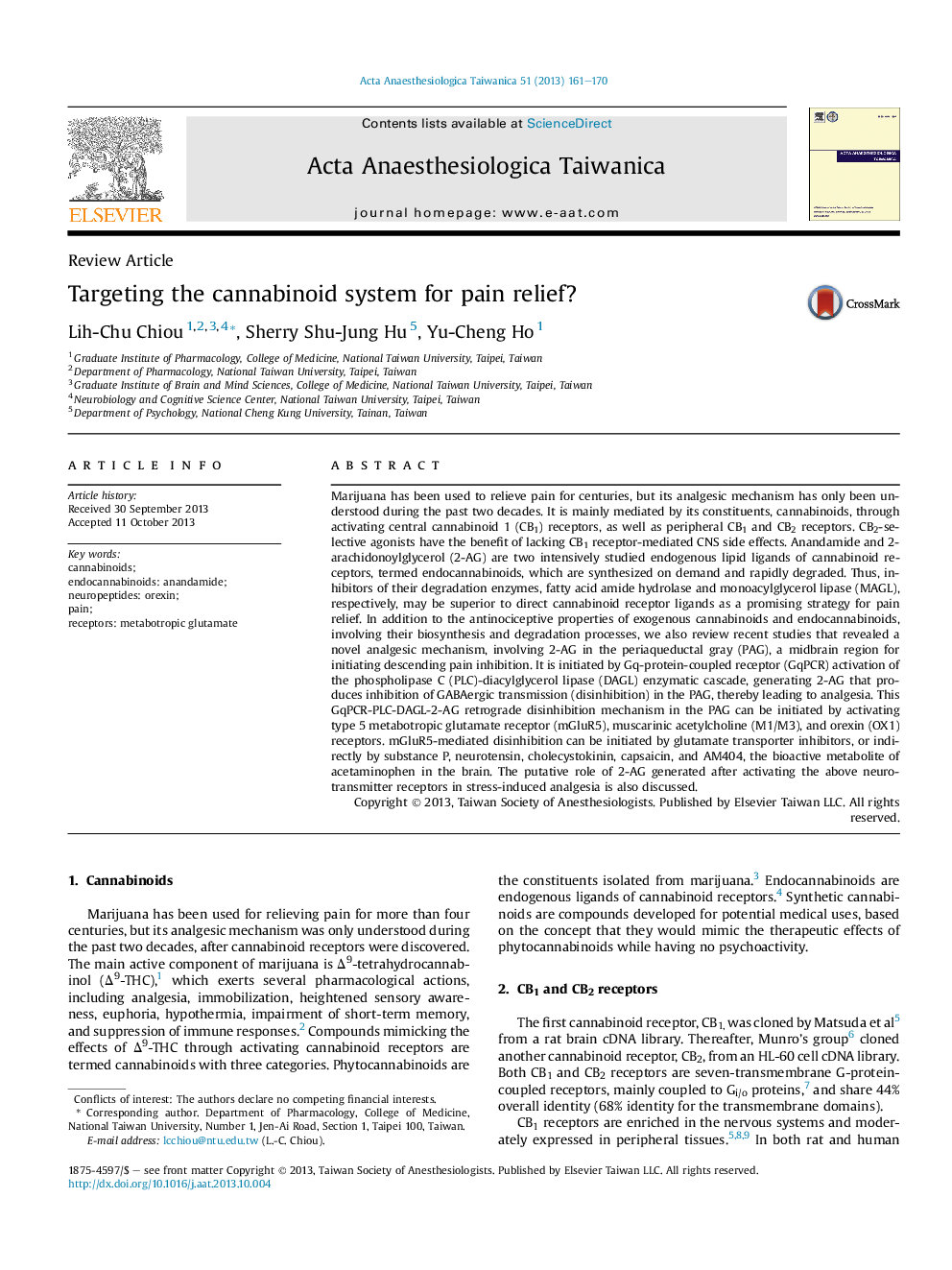| کد مقاله | کد نشریه | سال انتشار | مقاله انگلیسی | نسخه تمام متن |
|---|---|---|---|---|
| 2741397 | 1148526 | 2013 | 10 صفحه PDF | دانلود رایگان |

Marijuana has been used to relieve pain for centuries, but its analgesic mechanism has only been understood during the past two decades. It is mainly mediated by its constituents, cannabinoids, through activating central cannabinoid 1 (CB1) receptors, as well as peripheral CB1 and CB2 receptors. CB2-selective agonists have the benefit of lacking CB1 receptor-mediated CNS side effects. Anandamide and 2-arachidonoylglycerol (2-AG) are two intensively studied endogenous lipid ligands of cannabinoid receptors, termed endocannabinoids, which are synthesized on demand and rapidly degraded. Thus, inhibitors of their degradation enzymes, fatty acid amide hydrolase and monoacylglycerol lipase (MAGL), respectively, may be superior to direct cannabinoid receptor ligands as a promising strategy for pain relief. In addition to the antinociceptive properties of exogenous cannabinoids and endocannabinoids, involving their biosynthesis and degradation processes, we also review recent studies that revealed a novel analgesic mechanism, involving 2-AG in the periaqueductal gray (PAG), a midbrain region for initiating descending pain inhibition. It is initiated by Gq-protein-coupled receptor (GqPCR) activation of the phospholipase C (PLC)-diacylglycerol lipase (DAGL) enzymatic cascade, generating 2-AG that produces inhibition of GABAergic transmission (disinhibition) in the PAG, thereby leading to analgesia. This GqPCR-PLC-DAGL-2-AG retrograde disinhibition mechanism in the PAG can be initiated by activating type 5 metabotropic glutamate receptor (mGluR5), muscarinic acetylcholine (M1/M3), and orexin (OX1) receptors. mGluR5-mediated disinhibition can be initiated by glutamate transporter inhibitors, or indirectly by substance P, neurotensin, cholecystokinin, capsaicin, and AM404, the bioactive metabolite of acetaminophen in the brain. The putative role of 2-AG generated after activating the above neurotransmitter receptors in stress-induced analgesia is also discussed.
Journal: Acta Anaesthesiologica Taiwanica - Volume 51, Issue 4, December 2013, Pages 161–170